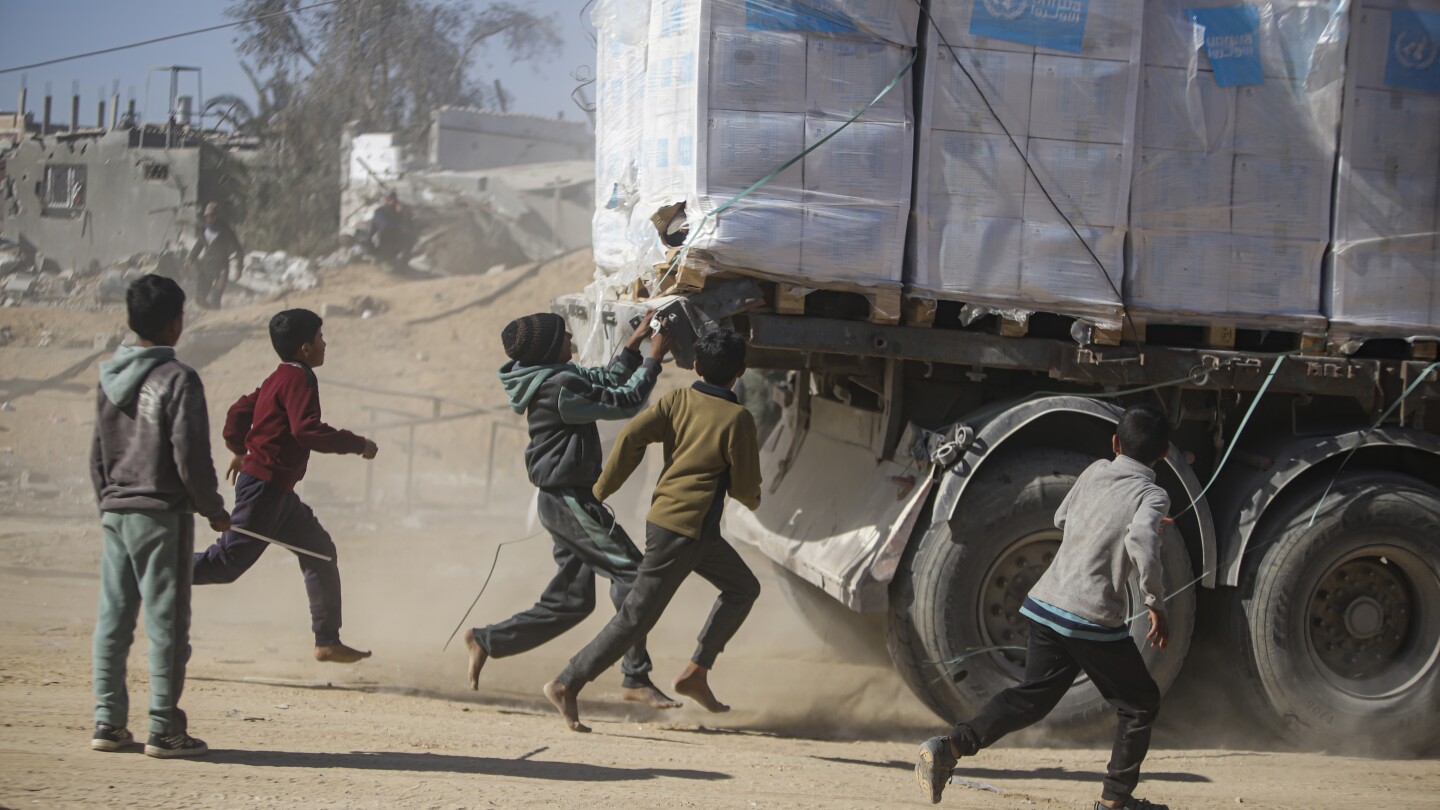Two weeks after the ceasefire between Hamas and Israel took effect, aid is flooding into the Gaza Strip, bringing relief to a territory suffering from hunger, mass displacement and devastation following 15 months of war.
But Palestinians and aid workers say it’s still an uphill battle to ensure the assistance reaches everyone. And looming large is the possibility that fighting will resume if the ceasefire breaks down after the six-week first phase.
As part of the ceasefire agreement, Israel said it would allow 600 aid trucks into Gaza each day, a major increase. Israel estimates that at least 4,200 trucks have entered each week since the ceasefire took hold.
Fuck isntreal and their American sponsors
Gotta read the whole article if you want any lil truth from imperial news
Humanitarian groups say aid distribution is complicated by destroyed or damaged roads, Israeli inspections and the threat of unexploded bombs…
Nadine Jomaa, a young woman in Bureij in central Gaza, said the aid is not freely available, and she needs to buy goods in the market, where they are resold for inflated prices. Though prices are coming down, flour and cooking gas still cost roughly triple the amount they did before the war, according to the World Food Program.
Her family is eating only cheap canned goods. “We need more food, water, household items for the kitchen and bathroom and women’s items,” she said.
Although humanitarian officials have long said the best way to prevent extortion is to flood Gaza with aid, Palestinians in the north say that, so far, the influx appears to have only boosted shadowy middlemen. Residents complain that there are not nearly enough tents entering Gaza while non-essential items such as chocolate, nuts and soda are suddenly ubiquitous.
Ahmed Qamar, 34, who returned to live in the ruins of his former home in Jabaliya, said his area has seen just a few dozen aid trucks.
“Hundreds of families here are sleeping in the open and in the cold,” he said. “We need electricity and shelter, and meanwhile markets are flooded with chocolate and cigarettes.”
Though aid workers say the Israeli inspection process has accelerated, getting certain types of aid into Gaza is still challenging. Some items are deemed “dual-use,” barring them from Gaza because of concerns they could be diverted by militants for military purposes.
Some hospitals and desalination plants still have fuel shortages. And Hamas on Sunday accused Israeli officials of obstructing the delivery of medical supplies and reconstruction machinery.
According to a list circulated to humanitarian groups by COGAT and shared with The Associated Press, desalination and water-collection devices, storage units, tools, tent kits, ovens, water-resistant clothing and equipment for shelter construction teams all require “pre-approval” before entering Gaza. Large tents, sleeping bags, portable toilets, heating pads and vaccines are cleared to enter the strip without Israeli approval.
“While aid is getting in in higher numbers, we also know that those restrictions on essential items are persisting,” said Sophie Driscoll, head of communications for the International Rescue Committee in the Palestinian territories…
Roads have been heavily damaged by the war, and unexploded bombs litter the landscape. The U.N. estimates that 5% to 10% of all ammunition dropped in Gaza has failed to detonate, making the territory potentially perilous for civilians and aid workers.
UNMAS, the U.N. agency handling unexploded ordnance, said that since the ceasefire took hold, humanitarian convoys and civilians have reported finding large aircraft bombs, mortars and rifle grenades.
As they return home, many Palestinians are living in areas where the water network has been destroyed. That makes dehydration and the spread of disease due to poor sanitary conditions and limited medical care a threat.
Speaking from southern Gaza, Jonathan Crickx, chief of communications at UNICEF, recalled being on a road where “thousands and thousands of children and families were walking.”
“I was seeing them with nothing,” he said, “only the clothes they’re wearing on their back.”


